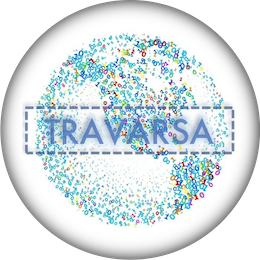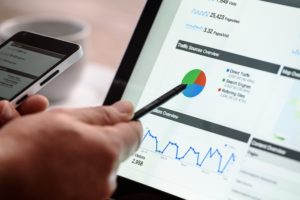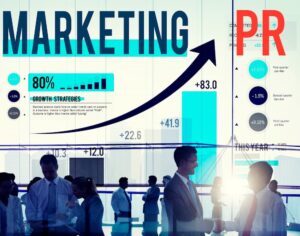Explore diverse databases: MySQL, PostgreSQL, MongoDB, DynamoDB, and more. Learn their uses in....
Read MoreGetting Started with Microsoft Fabric

All about Microsoft Fabric
Imagine a platform that effortlessly blends the capabilities of data warehousing, lake management, and automation, seamlessly woven into a single, intuitive environment. That’s the essence of Microsoft Fabric. Its flexible tapestry caters to a wide range of data management challenges, enabling you to store and analyze massive datasets for historical insights, automate repetitive tasks through Data Activator, unify disparate data sources regardless of their location, and gain deeper insights through advanced analytics tools within Fabric or seamless integration with Power BI for comprehensive visualization. Whether you’re a small business owner or a large enterprise, Fabric can be tailored to your specific requirements and scale with your evolving data demands.
What is Microsoft Fabric ?
Microsoft Fabric is a unified platform that simplifies and streamlines your organization’s data and analytics journey. It acts as an all-in-one solution, encompassing data ingestion, management, transformation, analysis, and visualization. Microsoft Fabric empowers organizations to unlock the full potential of their data for better decision-making and business growth. Its integrated components and user-friendly interface make it a valuable tool for various data needs. From building pipelines to generating reports, Fabric covers the entire data analytics journey.
Components of Microsoft Fabric ?
- Data Lake: Stores raw and unstructured data from various sources.
- Data Factory: Orchestrates data movement and transformation tasks.
- Data Warehouse: Provides a structured repository for querying and analysis.
- Real-Time Analytics: Enables processing and analysis of data streams.
- Data Science Workspace: Empowers data scientists with tools and collaboration features.
- Power BI Integration: Delivers insights and visualizations for informed decision-making.
Benefits of Microsoft Fabric ?
- Unified platform: Eliminates the need for stitching together disparate tools and services.
- Simplified data management: Streamlines data ingestion, transformation, and governance.
- Accelerated analytics: Enables faster insights through integrated workflows and tools.
- Improved collaboration: Provides a shared environment for data teams to work together.
- Enhanced scalability: Adapts to your organization’s growing data needs.
Usage of Microsoft Fabric ?
- Building data pipelines: Automate data movement and processing tasks.
- Creating data warehouses: Store and analyze historical data for trends and patterns.
- Performing real-time analytics: Gain insights from data streams for immediate action.
- Developing predictive models: Leverage data science tools to forecast future outcomes.
- Generating reports and dashboards: Communicate insights effectively to stakeholders.
Prerequisites:
- Basic understanding of data warehouses and data lakes: Having a grasp of these concepts will help you navigate Fabric’s core functionalities and purpose.
- Microsoft Azure account: You’ll need an Azure account to access Fabric resources and services. Consider creating a free trial account if you don’t have one.
- Familiarity with data integration concepts: If you’re unfamiliar, Microsoft Learn offers excellent courses on data integration with Azure. Understanding these concepts will be beneficial for working with Fabric’s data management capabilities.
- Experience with Power BI (optional): While not strictly required, having experience with Power BI can be helpful if you plan to leverage Fabric’s integration with it for enhanced data visualization and analysis.
Microsoft Fabric documentation
- Start by thoroughly reviewing the official Microsoft Fabric documentation (https://learn.microsoft.com/en-us/fabric/).
- This comprehensive resource covers all aspects of Fabric, from its core concepts to specific use cases and tutorials. Pay particular attention to the “Get Started” section to gain a solid foundation.
- Choose your Fabric experience: Fabric offers several different experiences tailored to various data management needs. Here’s a breakdown to help you decide:
- Data Warehouse: Ideal for storing, managing, and analyzing large datasets for historical analysis and reporting.
- Data Activator: Designed for automating data movement and transformation based on triggers and conditions.
- OneLake: A data lake solution for storing and managing raw data in its native format.
- Data Factory: A powerful data integration service for moving and transforming data between various sources and destinations.
- Synapse: A unified analytics platform offering data warehousing, data lake, data integration, and advanced analytics capabilities.
- Complete relevant tutorials: After selecting your Fabric experience, delve into the corresponding tutorials on Microsoft Learn (https://learn.microsoft.com/en-us/fabric/get-started/). These hands-on guides will walk you through the setup process and provide practical examples to solidify your understanding.
Target Users:
Data analysts, data engineers, data scientists, business intelligence professionals, and anyone who needs to leverage data for decision-making.
Key Takeaways:
Microsoft Fabric empowers organizations to unlock the full potential of their data for better decision-making and business growth. Its integrated components and user-friendly interface make it a valuable tool for various data needs. From building pipelines to generating reports, Fabric covers the entire data analytics journey.
Microsoft Fabric transcends the confines of a mere data management platform. It’s a strategic investment in your data ecosystem, offering a bouquet of benefits: simplified management through streamlined processes and user-friendly interfaces, enhanced efficiency through automated tasks, deeper insights through powerful analytics, and future-proof scalability to grow alongside your business. Stepping into the world of Microsoft Fabric means weaving a path towards a more efficient, insightful, and future-proof data strategy. Embrace its power and unlock the full potential of your data to drive success.
No-code/Low-code Development Benefits and Platforms
Discover the benefits of No-code/Low-code Development and explore leading platforms in this revolutionary....
Read MoreHow to start your career as a Front-End Web Developer ?
Elevate your career with Front-End Web Development. From HTML to frameworks, certifications guide....
Read MoreROAS Strategies and Tools
Unlock the power of Marketing Automation with Machine Learning. Elevate your strategies, engage....
Read MoreHow to start your career as a Software Testing Engineer ?
Unlock the path to becoming a Software Testing Engineer with our guide. From....
Read MoreGetting Started with Microsoft Fabric
Unlock the power of Marketing Automation with Machine Learning. Elevate your strategies, engage....
Read MorePredictive Marketing Analytics : Strategies & Benefits
Explore the future of marketing with predictive analytics. Unlock insights, optimize strategies, and....
Read MoreHow to start your career as a Full Stack Developer ?
Launch your Full Stack Developer career with our comprehensive guide. Explore essential skills,....
Read MoreAdvance PR Strategies in Marketing: Benefits & Tools
Discover the power of PR in marketing. Learn about the benefits & tools....
Read MoreUnderstanding Web Servers and Types of Web Servers
Explore the top 10 web servers, from Apache's reliability to Node.js's innovation. Discover....
Read More









